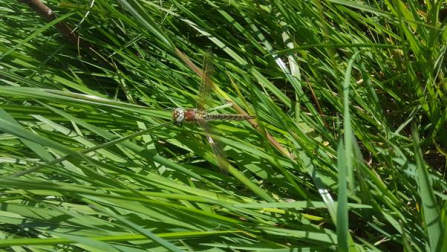
When I began my role last year my main focus was getting to grips with the wetland restoration at Morton Marsh. At first glance it’s simply a reedbed with the odd tree and wet ditch but take a closer look and there’s more diversity than I can identify amidst the hubbub of birdsong, each one shouting to be heard and bickering for the best nest sites and mates. Lapwing in particular have a beautiful sound, so characteristic of wetlands in springtime, and this call is also the root of their alternative name, the peewit. I also heard reed warbler, sedge warbler, Cetti’s warbler and reed bunting.
Wetlands are a vital part of our ecosystem and are often the most diverse areas as so many plants and animals are reliant on water. It’s not just about those who spend their entire lives living in ponds and rivers, but many invertebrates spend larval stages in water and many birds rely on these invertebrates as their food source. At Morton Marsh the Down to the Coast project has undertaken quite a bold step in restoring some of the wetland diversity to the Eastern Yar floodplain by excavating several scrapes to hold year round water and provide shallow muddy edges for emergent vegetation and feeding areas for waders. The project, thanks to lottery funding, has also been able to provide infrastructure to allow grazing to help improve the botanical diversity and for people to be able to enjoy it as a nature reserve. A new viewing platform has been constructed overlooking the main scrape area from which visitors can gain a better view of the site, its abundant wildlife and the surrounding landscape features.


